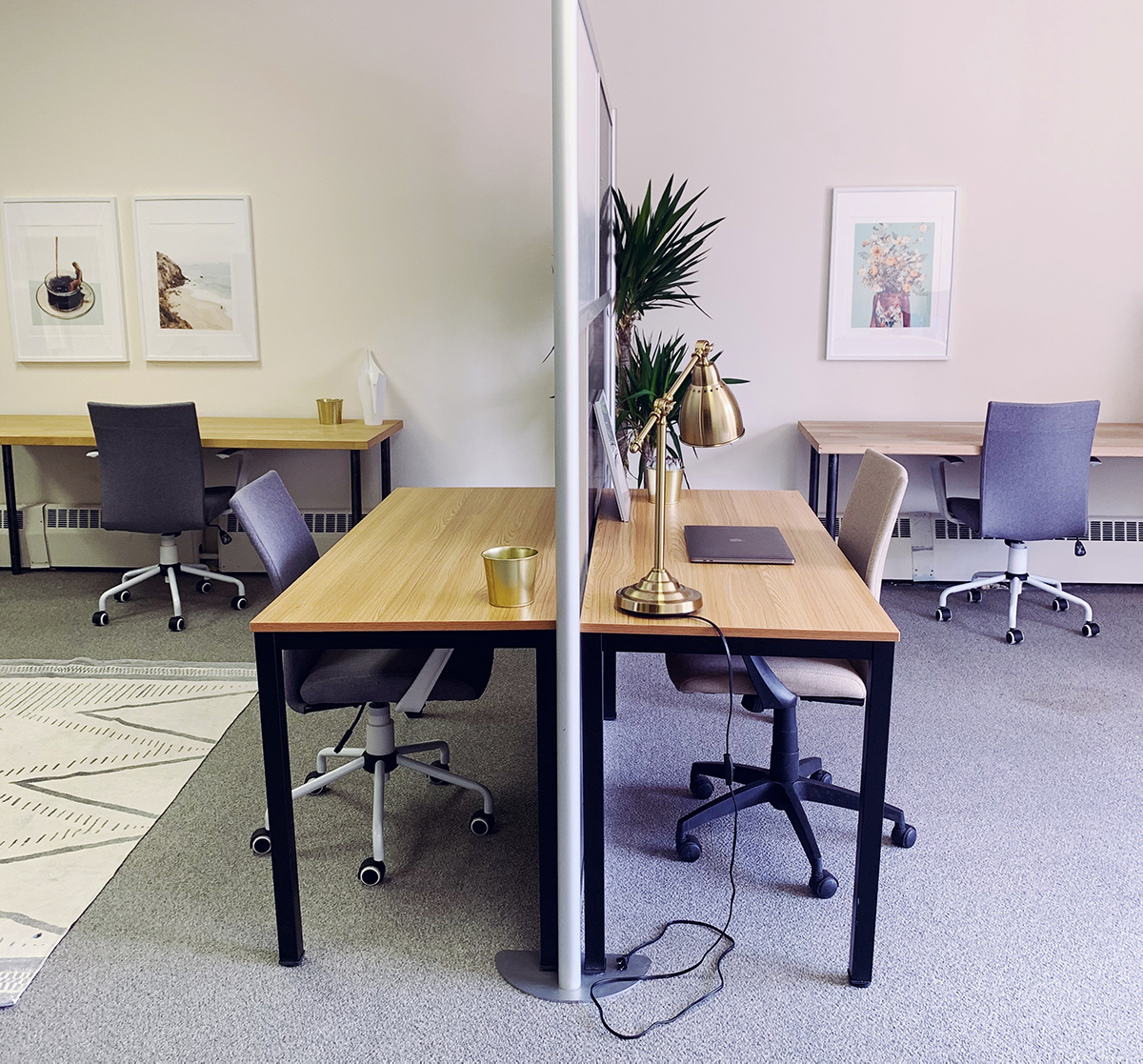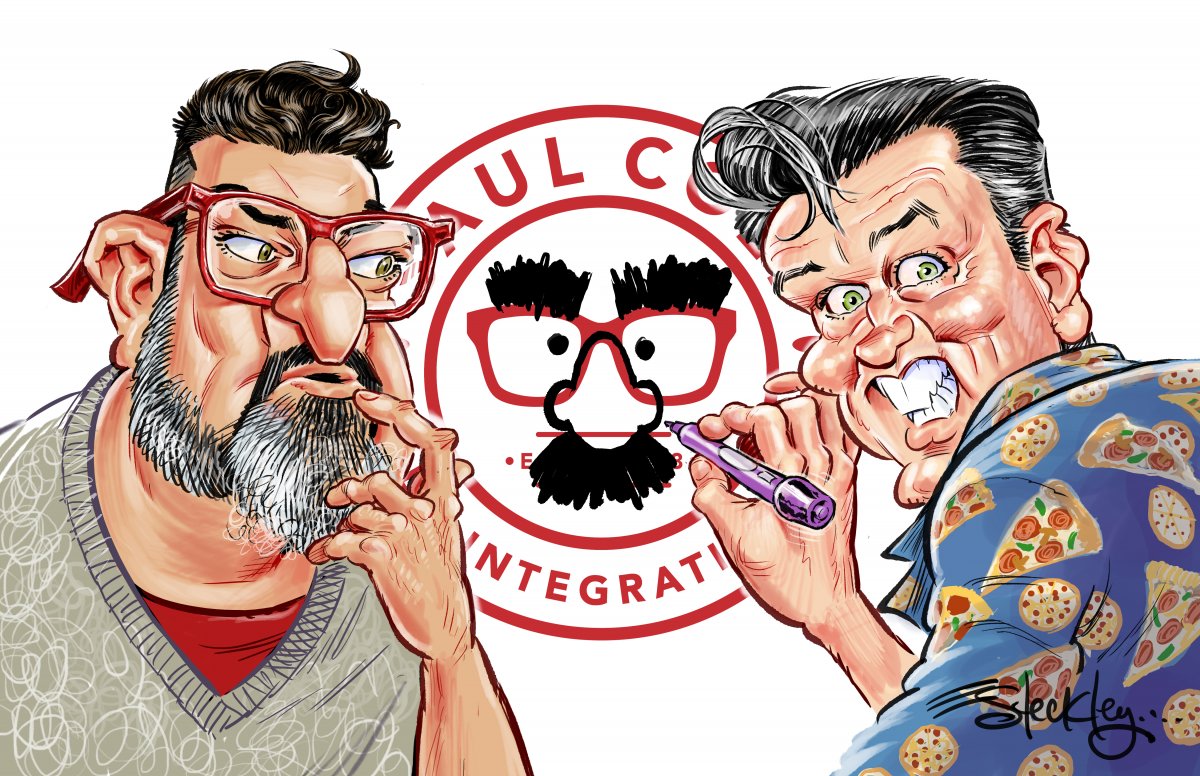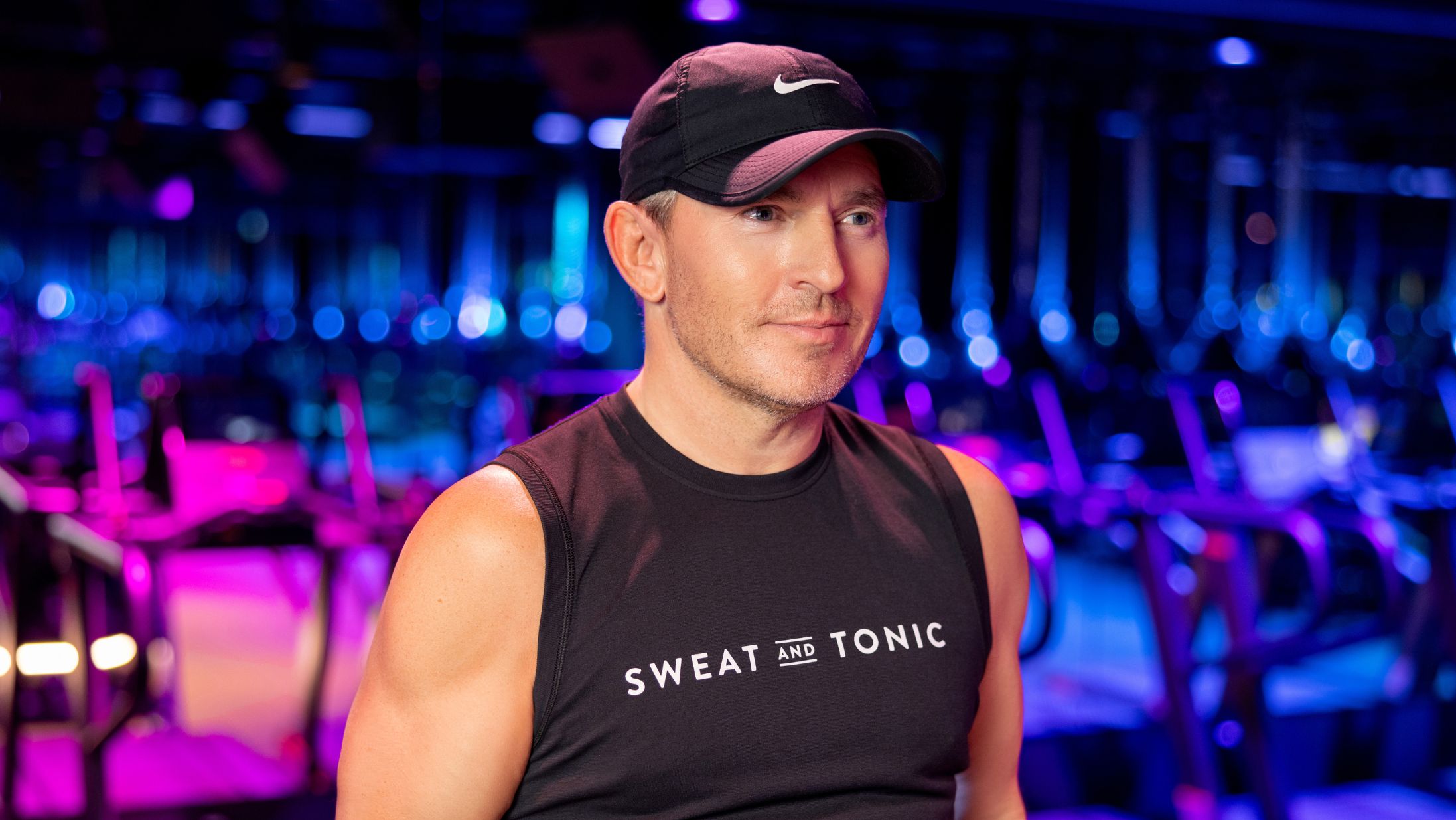[vc_row][vc_column][vc_column_text]When the COVID-19 pandemic forced offices to close, parents everywhere had to turn kitchen islands and dining room tables into working stations. For many, this was the first experience with working from home. One thing became clear: it’s not easy to do.
The stress and challenges of working from home, especially with young children, are all too familiar for Amanda Munday, founder of The Workaround.
Since October 2018, The Workaround has been a co-working space in East York that’s designed with children in mind. Along with quiet work spaces for parents, it has a separate area where children are entertained and carefully looked after by registered early childhood educators.
“The Workaround is a place of real rest for parents,” said Munday. “They can truly focus on work, they know their kids are well taken care of in a great space and then they can pick their child up right there and head home.”
Munday created The Workaround as a means to solve her own problem, but quickly realized that its mixed model of office space and childcare was in high demand.
Before COVID-19, the space worked on a drop-in model and saw parents with upwards of 75 children a week. Now, given health and safety restrictions, Munday has had to shift The Workaround’s approach to full-time care, and hopefully a membership-based model soon.
Making the decision wasn’t easy, because Munday envisioned The Workaround to be able to be used by working parents whenever and if ever needed. However, her commitment to providing a space of peace and productivity remains the same.
In addition to being a first-time entrepreneur, the working mom is taking on a new role as a TedxToronto speaker for the Uncharted digital event series.
While we can’t share the content of her upcoming TedxToronto talk, we can let you get to know Munday a little bit better before she hits the digital stage. For this week’s Entrepreneur of the Week, Bay Street Bull spoke with Amanda Munday, founder of The Workaround, about creating a solution for a glaring problem.[/vc_column_text][vc_text_separator title=”Q&A” color=”custom” style=”dotted” border_width=”3″ accent_color=”#05547f”][vc_column_text]


What inspired you to start The Workaround?
There’s really two main reasons. The first is that it was completely selfish and self interested. I’m a mom of two kids; my kids are now six and four. I have a background working in tech, and when I returned to work after maternity leave, I wanted to have a thriving career. But, childcare in Toronto is upwards of $20,000 per kid a year. And so for two kids, it was going to cost me close to $50,000 a year to put them in full-time care. Even if I was to lean on family, even if I can find alternative options, the question became, ‘Well, what do other families do? What are other options?’ Especially if you don’t need full time 9 a.m. to 5 p.m., Monday to Friday care. And so really, I built The Workaround so that I could solve my own problem.
Then it quickly became very clear that other families could use an alternative child care model. Really, the basis for The Workaround was what does a drop in hourly child care model look like? And how can we get parents to focus at work? What if we have an office space with childcare? That’s how it was born.
Very cool. Were there any obstacles that you had to overcome to make The Workaround a reality?
There were many challenges: I don’t come from any sort of financial safety net or background, I don’t have a ton of funding myself, I didn’t have capital to start it. So, I debt-financed it. Also, The Workaround is the very first company I’d ever started. And I certainly had no experience in running a brick and mortar shop. However, I had worked in lots of co-working spaces in the city, and I do have a marketing background.
The first hurdle I ran over was funding, both figuring out how to fund a huge space, buy furniture and get a lease. Then, as a woman entrepreneur, the questions that I faced were always around proving that I could do it versus the potential of doing it. We know that women are systemically underfunded, especially women of colour. Male founders are often funded on potential, whereas women get funded on proving that they can do it. So that was a constant hurdle, proving that The Workaround could work. Things got a lot easier once I did open and prove that there were families that needed us.
What’s the response from working professionals who come into The Workaround?
It’s really funny because still to this day, people say like, ‘Wow, The Workaround is so obvious. Why didn’t I think of childcare at a workplace?’ We assume that having kids at work is obvious, but it’s not really. We often think of other amenities in the workplace, but not how we can bring kids to work.
What I noticed right off the bat is just how much more efficient parents were, because you’re not commuting, you’re not racing out for daycare pickup, you’re also not wasting any work time, because as a parent, you can’t catch up in the evening, right? And so, I would watch parents be more efficient in four hours than somebody else working eight hours with coffee chats, social media scrolling and breaks to stretch your legs. Parents don’t do those things they’re in, they’re out, because they’ve got a whole bunch of other responsibilities on top of those work responsibilities. It’s why The Workaround is a place of real rest for parents. They can truly focus on work, they know their kids are well taken care of in a great space and then they can pick their child up right there and head home.
As we all know, during the pandemic, suddenly, our homes became our office. And there’s no break from it. Add toddlers on top of that, and you’ve got your work life, your parenting life and your home life sometimes all in the same room. There’s no mental break from that. So, even though we’ve reopened to much smaller numbers, what we’re seeing is parents coming in and saying, ‘Okay, I have the physical space to take a breath and the mental capacity to focus just on work, because I’m in a space that’s meant for just work.’
RELATED: Transplant Actor, Hamza Haq, talks Uncharted territories ahead of TedxToronto[/vc_column_text][vc_single_image image=”20493″ img_size=”full”][vc_column_text]What’s the feedback been like since you were able to open back up? Do you have any really happy memories of people coming back for that first time and being like, ‘Oh, my gosh, like, I can get stuff done today!’
It’s certainly been really bittersweet. Everyday I feel like I have a mix of emotions and reopening, as a small business owner, it’s been incredibly hard. My house is on the line with The Workaround. So, if we don’t have enough members return, I don’t just lose The Workaround, I lose my house. Not to mention, I love it, I don’t want The Workaround to close.
The big difference for us is that The Workaround was meant to be alternative childcare with drop-in hourly support. So, if you needed two hours or half a day, twice a month, that was great. If you wanted every day that was also great. With COVID, we’ve had to completely eliminate an hourly drop in model and move to a full-time model. We’ve dropped from up to 75 unique children in a week to only 15 full-time kids in a week. So, the only way to make 15 full-time kids work is to charge full time monthly rates, which breaks my heart.
For the parents who were able to come back for us, it was so great to see them and say, ‘We missed you.’ I’m happy to be able to continue to serve our community in East York.
For yourself as a mom and an entrepreneur what was your biggest hurdle you have to get over during the pandemic?
I’m not over it. I’m still very much in the weeds. When my kids went to school, that was a big thing. What was so frustrating for me, is that I had the answer. I built a model that proved working from home with your kids is impossible. It’s why I built The Workaround in the first place: so you could go somewhere, work remotely and have your kids watched. So, it was excruciating to be home and locked down and see so many parents online saying like, ‘I don’t know how anybody does this. It’s impossible. I’m screaming.’
I had some media calls in the early days of the pandemic where I was asked to give advice on how parents can work from home with their kids. And my advice was always like, ‘You can’t. That’s why The Workaround exists.’ [laughs]
I think at this point, what I’ve learned as a parent and a business owner, and somebody who’s trying to sort of manage all these different realities at the same time, is to just give myself grace with what can be done in a day. I can’t take on a whole bunch of new projects, and relaunch a company with a totally new business model, and transition my children to school, and make healthy dinners and keep my house clean. Too many things to hold, right? I have to have a bit of grace around what I can do, what I can manage, and allow the bar to be much, much lower, so that we can survive this in the long haul.
As someone who’s created a company to solve the challenges of being a working mother or working father, what do you wish more companies would do for working parents?
I think that there’s a real pervasive assumption that in order to support parents at work, employers need to pay or subsidize the cost of childcare. And that’s expensive, so they can’t do it. That’s only one of the many ways that employers can support parents at work. You can think about even just the time of day. If your workplace is 9 a.m. to 5 p.m., Monday to Friday, maybe we don’t put meetings between 8 a.m. to 10 a.m. and 4 p.m. to 6 p.m., because that’s when kids are hungry and loud. That’s school pickup and drop off time. That’s the hardest time for parents, and it doesn’t cost very much to just switch the meetings.
The other thing is evening beers and team social meetups. Those often take place at bedtime, and can be incredibly stressful. So, a midday lunch, or brunch, or social meeting—even if it’s virtual—can alleviate a lot of pressure on parents. Asking parents about a model that works for them, and a working style that works for them can go a long way in building loyalty. Parents in the workplace are often people with many years experience, they’re often senior talent that are expensive to lose and hard to hire. If you build a solid, supportive working environment when those employees have young kids, they’ll remember that for their entire career. [/vc_column_text][vc_single_image image=”20496″ img_size=”full”][vc_column_text]As an entrepreneur who is trying to build this business, and was thrown a loop with COVID-19, what advice would you give to your younger self?
Slow down. A year ago, I really had my sights on multiple locations of The Workaround. I wanted to be in every neighbourhood. I saw the demand before the demand really showed up. With the way the crisis has shifted, our work demands, the financials, the economy, and also my family needs, I think it’s okay to say, ‘We don’t have to start new things in the middle of a global pandemic.’ What’s really critical right now is to prioritize rest, recovery and planning, so that when things do start to kick back into gear, we’re ready to go out and build the types of businesses we want to see in the world. But right now, it’s asking a lot to do that. The lesson for right now is to prioritize as much sleep as possible, rest and be ready to grow in the future.
What advice would you give to entrepreneurs who are not only trying to raise a business but raise a family at the same time like you are doing yourself?
I firmly believe in the productivity and efficiency of parents. You have not met efficiency until you meet somebody who is trying to live these multiple identities all at the same time and still have everything wrapped up by 7 p.m. bedtime. So, parents are capable of so much. The assumption that parents are not efficient or distracted, or don’t hire young women, because they’re in the baby making years is all junk. Parents are completely capable, efficient and productive.
You can get through these hard times. It’s just a matter of setting expectations for what can be accomplished within a day and having grace for the times you need to slow down a bit. You will get through it.
We’ve talked about the importance of taking time to breathe, so that when that time does come to build things up again, we’re ready and we’re rested. What do you hope for that time, when knock on wood, COVID-19 is in the past? Where do you hope to see The Workaround eventually?
Now I have a very short term goal and long term goals. The short term goal, quite honestly, is to keep my one location alive. And there’s some very real threats that I’m facing right now. I’m heavily relying on the government wage subsidies and the government rent subsidies. And when those wind down, we’re at real risk. We’re nowhere near the sales, we were pre-pandemic. So my short term goals are keep us alive, so that there is The Workaround and figure out a new business model with a membership base.
And then once I feel secure that and we’ve recovered from this, I do think that there’s certainly going to continue to be a need for The Workaround in every local neighborhood. Where there are schools and working parents, there’s a Workaround.
[/vc_column_text][vc_separator color=”custom” style=”dotted” border_width=”3″ accent_color=”#05547f”][vc_column_text]
Tune in to Amanda Munday’s TEDxToronto talk on Nov. 26, 2020. Get a season pass to attend the next three of TEDxToronto’s Uncharted speaker series for $40, or attend a single session for $15.
[/vc_column_text][/vc_column][/vc_row]













